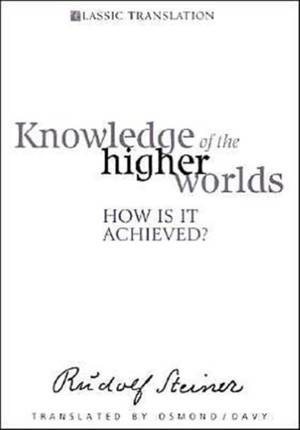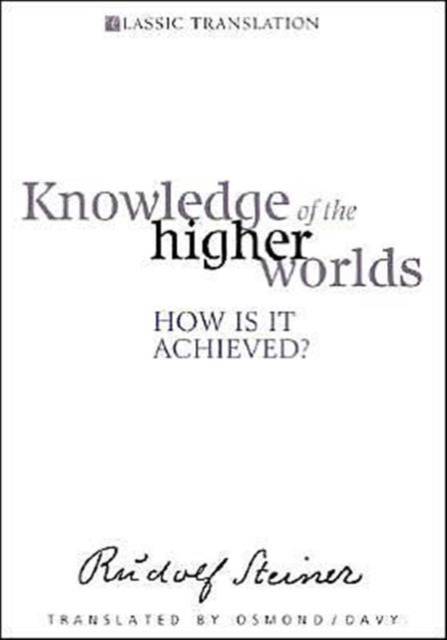
- Retrait gratuit dans votre magasin Club
- 7.000.000 titres dans notre catalogue
- Payer en toute sécurité
- Toujours un magasin près de chez vous
- Retrait gratuit dans votre magasin Club
- 7.000.000 titres dans notre catalogue
- Payer en toute sécurité
- Toujours un magasin près de chez vous
Description
Published in 1904 (CW 10)
Rudolf Steiner's foundational handbook for spiritual and personal development has grown more modern with time, though his methods remain clearly distinguishable from many current paths of inner work. First, Steiner's method is based on the clarity of thought normally associated with scientific research. Instead of denying clear thinking, his aim is to extend it beyond its present limitations. Second, Steiner recognizes--as do all genuine paths--that the way to spiritual experience is arduous and dangerous and calls for self-control in thought, word, and action. The human being comprises a unity, and we cannot develop knowledge without a corresponding development of feeling and will.
Steiner predicted that humanity would begin to experience a longing for forms of experience that transcended intellectual, materialistic thinking. More than a hundred years after the first publication of this book, countless means are offered for achieving transcendental experience, including Eastern meditation practices, channeling, remote viewing, and astral projection. Moreover, there has been a huge increase in the number of people who report various suprasensory perceptions, such as near-death experiences and meetings with angels. In this context, Steiner's key spiritual guidebook is needed more than ever, given its unique, precise instructions for inner training, its protective exercises, and its indications for staying grounded and centered. Knowledge of the Higher Worlds begins with the preconditions for personal development and guides the reader through the stages of initiation, its practical aspects, and its effects.
This volume is a translation from German of the written work Wie erlangt man Erkenntnisse der höheren Welten? (GA 10).
Spécifications
Parties prenantes
- Auteur(s) :
- Editeur:
Contenu
- Nombre de pages :
- 224
- Langue:
- Anglais
- Collection :
Caractéristiques
- EAN:
- 9781855841437
- Date de parution :
- 15-11-04
- Format:
- Livre broché
- Format numérique:
- Trade paperback (VS)
- Dimensions :
- 163 mm x 186 mm
- Poids :
- 213 g







